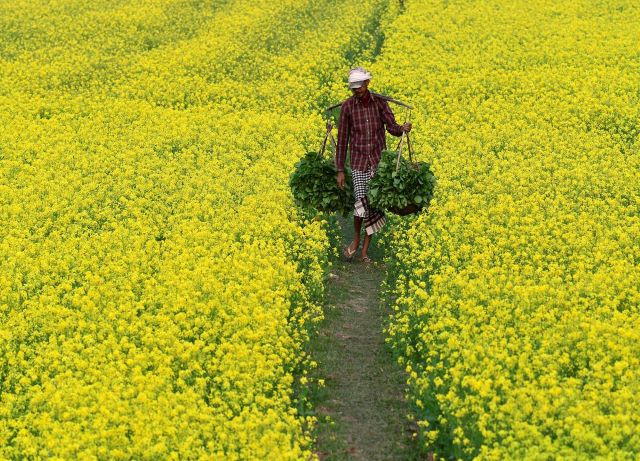Mustard and mustard are cultivated as major oilseed (groundnut, mustard, soybean) crops. Mustard cultivation is mainly done in Madhavpur, Bharatpur Sawai, Kota, Jaipur, Alwar, Karoli etc., districts of Rajasthan. Mustard is used to extract oil from its seeds. Mustard oil is used in large quantities in our country. Apart from oil, the cake also comes out from mustard seeds, which are used as animal feed. Moreover, the New Holland 3230 tractor is best for all sorts of farming.
About 2.5 per cent phosphorus, 1.5 per cent potash and 4 to 9 per cent nitrogen are present in its cake. It is also used as fertiliser in foreign countries, but India only uses it as animal feed.
Black Mustard
Black mustard has round shaped, hard and larger seeds than yellow mustard. The colour of this mustard varies from dark brown to black. This mustard is mostly used by farmer brothers to sell crops, and its yield is also high. It is used more in edible oil, and after crushing, more oil cake comes out in it, which is beneficial for feeding animals too, or farmer brothers can sell it directly in the market.
Yellow Mustard
Yellow mustard is also known as mustard Where oil is extracted from black mustard seeds and used for cooking, mustard seeds are used for pickling and tempering.
Soil, Climate & Temperature
The winter season is considered very suitable for the mustard crop. Its plants require a temperature of 18 to 24 degrees to grow well. Soil and sandy loam soil are most required for mustard cultivation.
Field Preparation
Before planting mustard seeds in the field, its field should be prepared properly so that a good yield of mustard can be obtained. Mustard cultivation requires loose soil. Since the mustard crop is done after the Kharif crop, the field should be deeply ploughed so that the residues of the old crop are destroyed.
After that, do two to three oblique field ploughing by applying a rotavator. After ploughing, ploughing is done by placing the planks, due to which the field will become level, and there will be no problems like water-logging.
Sowing Method
Mustard should be sown between September to October. Its sowing can also be done till the end of October, but only in irrigated areas. Then, 25 to 27-degree temperature is considered suitable for its sowing, and mustard is sown in rows. For this, rows should be prepared to keep a distance of 30 cm in the field. After this, keeping a distance of 10 cm, mustard seeds should be planted.
Before sowing the seeds, they should be treated with an appropriate amount of mancozeb. After this, according to the moisture of the land, the seeds should be planted in depth. 3 to 5 kg of seeds are required per hectare.
Fertilizer & Manure
For a good crop yield, a good amount of manure and fertilisers should be given in the field. For this, at the time of ploughing the field, 8 to 10 tonnes of old cow dung manure should be put in per hectare. After this, mix the cow dung well by driving a tractor. Then, in the form of chemical fertilisers, apply 30 to 40 kg of phosphorus, 375 kg of gypsum, 80 kg of nitrogen and 60 kg of sulphur in the field according to per hectare. Give a full quantity of phosphorus and half the amount of nitrogen at the time of ploughing and half the dose at the initial irrigation.
Irrigation
After the second irrigation should be done in 60 to 70 days. After that, water should be applied if irrigation is required in the field. Moreover, John Deere 5310 has all advanced features and powerful handling of farming attachments.
Weed Control
It is necessary to control weeds for mustard plants to grow well. Its first hoeing should be done in 25 to 30 days. After this, when weeds appear in the field from time to time, weeding should be done. Apart from this, weeds can be controlled chemically by spraying Flumlorelin with proper irrigation.
Harvesting
Mustard crop gets fully ripe in 125 to 150 days. After which it can be harvested. If its plants are not harvested properly, then its pods start cracking. Due to this, the yield can decrease by 7 to 10 per cent. When the pods appear yellow in mustard plants, they should be harvested. The market price of mustard is very good, due to which farmer brothers can earn well by cultivating mustard.


